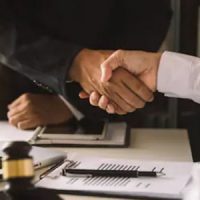Completing Your Chapter 7 Bankruptcy

After filing for Chapter 7 bankruptcy, you might feel intense relief. However, quite a bit of work remains before you receive the discharge of your debts. At Nowack & Olson, PLLC we guide our clients throughout the entire bankruptcy process. We will stand by your side every step of the way until you receive the discharge that wipes out your qualifying debts.
Attend a 341 Meeting of Creditors
This meeting provides an opportunity for your creditors to come and question you about your debt and any collateral being used to secure a debt. Often, no creditors show up.
The trustee will also ask basic questions during the meeting. Many clients are nervous about the meeting, but it is not a cross examination that you see during a criminal trial. Instead, the purpose of the meeting is informational. The trustee wants to verify your identity and your sources of income. The trustee also wants to find out if you have any assets or liabilities you failed to disclose in your paperwork. If you used an attorney to file, there should be no surprises at this meeting.
Complete a Debtor Education Class
Before filing, you took a credit counseling class. There is another educational requirement before you can receive a discharge, and this is the debtor education class. Most people take this class online or over the phone, though some meet in person. The purpose of the class is to provide financial management information that will help you avoid debt in the future. This is a required class, and you cannot wipe out your debts without completing it and submitting a certificate to that effect.
Keep or Surrender Collateral
Many people have secured loans. This means that certain assets are pledged as collateral. If you default, your creditor can seize the asset.
Secured debts are a little more complicated to deal with in a Chapter 7 bankruptcy. In short, you can wipe out the personal debt, but you can’t eliminate the security interest, so you will need to choose a different option:
- Surrender the collateral, i.e., turn it over to your creditor
- Reaffirm the debt and keep the collateral
- Redeem the collateral
Debtors will file their intentions within 30 days of filing their petition. Whatever your intentions, you must follow through promptly. Section 521(a)(2)(B) gives you 30 days from the Meeting of Creditors to perform, after which the creditor can just go ahead and take the collateral.
Deal with a Creditor Objection
A Chapter 7 bankruptcy is usually straightforward. Debts are dischargeable or they are classified as nondischargeable under the bankruptcy code. For example, child support and alimony are not dischargeable, so you can’t get rid of them.
In some situations, a creditor will object to your attempt to wipe out a debt that technically is eligible for discharge. The creditor will file a complaint in the court, which you will need to respond to.
These complaints are uncommon, principally because the bankruptcy code does not provide many legal grounds for challenging a debt. For example, your creditor might allege that you obtained a debt fraudulently or that your debt relates to a willful and malicious injury. If you try to discharge a court judgment stemming from a drunk driving accident, for example, the victim could ask the judge not to eliminate the judgment.
Creditors have 60 days to file these complaints, after which the debt is usually discharged. Banks and other sophisticated creditors are usually on the ball. When we meet with clients, we fully review all debts to identify whether any are vulnerable to a creditor complaint.
Contact Us Today
At Nowack & Olson, PLLC, our Chapter 7 clients usually complete the process in a matter of months. Please call our Plantation bankruptcy lawyers today at 888-813-4737 to schedule a free consultation.
https://www.floridabankruptcynow.com/avoiding-bankruptcy-scams/
